Imagine a massive snake that could swallow a human with enough strength to easily crush bones.
Such a creature might seem like a figment of imagination, but in the swamps and forests of South America, it is a reality. A 33-foot-long monster Anaconda was discovered by construction workers in Brazil. (You need to watch the video below).
- The giant anaconda was discovered after an explosion in a nearby cave, where the construction workers found the 900 lbs (400kg) monster.
- It was 33-foot-long (10m), longer than any other Anaconda ever.
- A crane was needed to lift it and show the snakes enormous size.
The Discovery
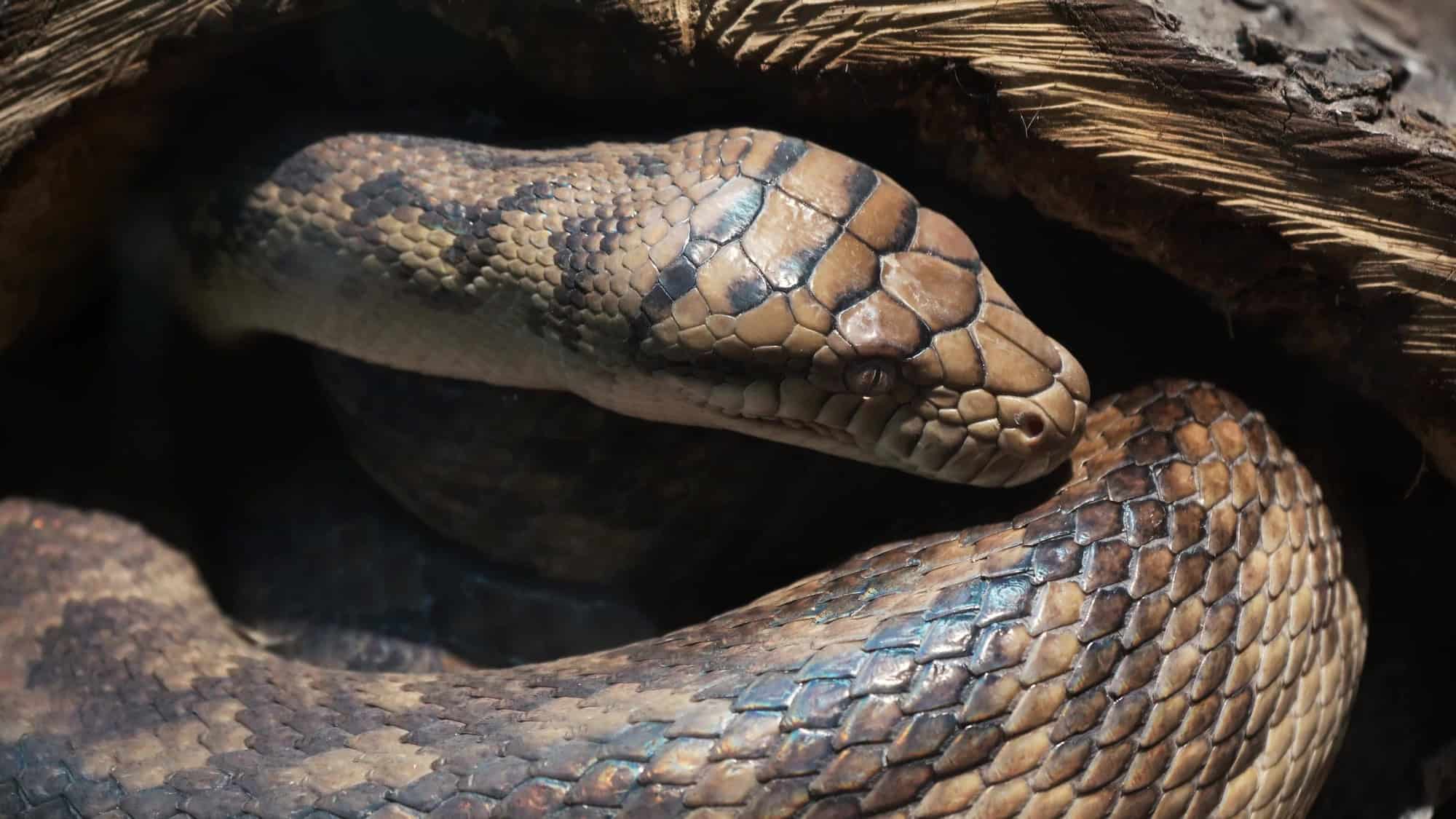
In this exciting post, we’ll explore the awe-inspiring and terrifying world of anacondas and delve into the shocking discovery of the largest one ever seen. Hold onto your hats, and get ready for a wild ride into the heart of the jungle!
Massive Snake

Anacondas are some of the largest and most fearsome snakes in the world. They have inspired countless legends and myths and captured people’s imaginations for centuries.
Incredible Size

Anacondas are part of the Boidae family, including pythons and boas. The four known kinds of anacondas: are the green anaconda, the yellow anaconda, the dark-spotted anaconda, and the Bolivian anaconda.
Footage

All of them are impressive constrictor snakes that can be pretty intimidating! The one found in Brazil was a green Anaconda.
Species of Anaconda: #1 Green Anaconda
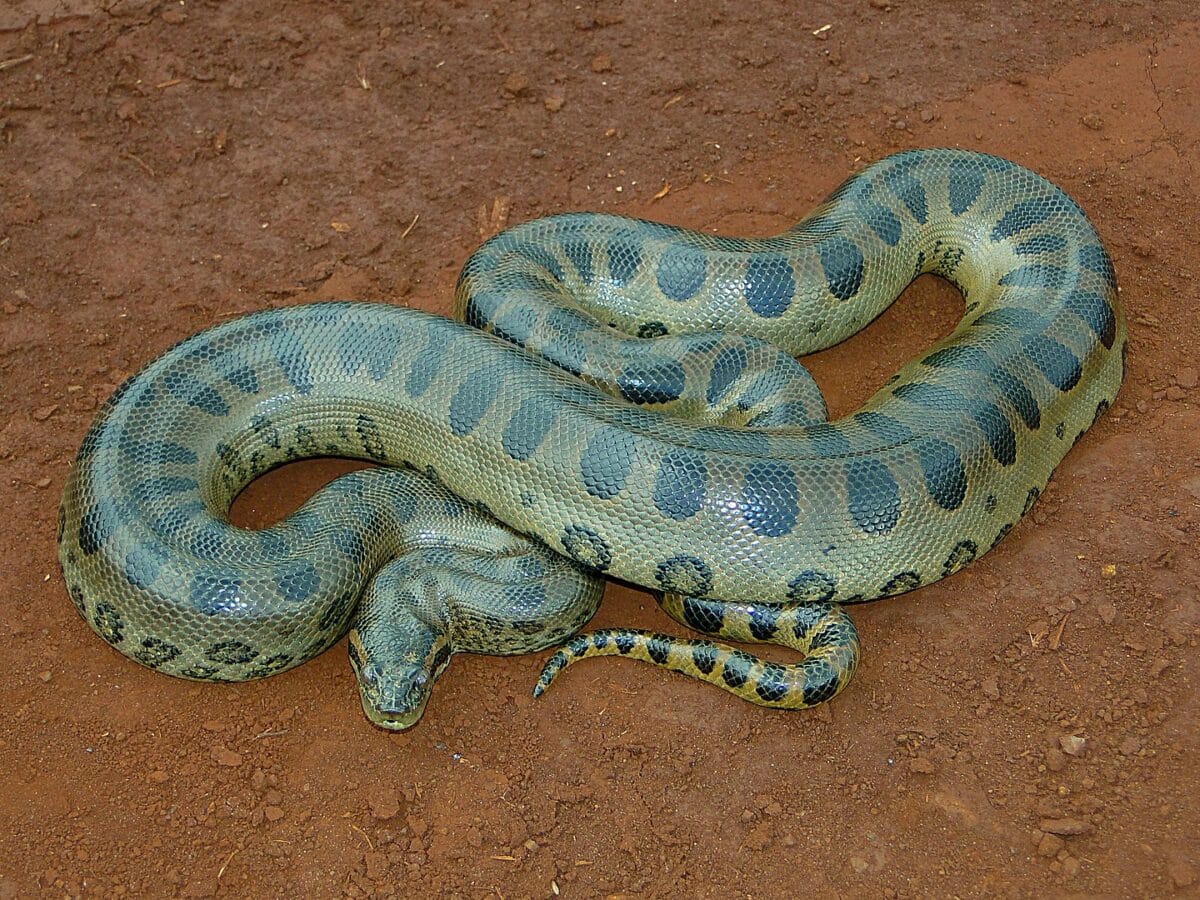
The green anaconda is the largest and most well-known species of anaconda. It can grow up to 30 feet long and weigh over 500 pounds, making it one of the largest snakes in the world.
As its name suggests, it has a greenish-brown skin that helps it blend in with the vegetation in its swampy habitat. It is found mainly in the Amazon Basin, including countries such as Brazil, Peru, and Colombia.
#2 Yellow Anaconda
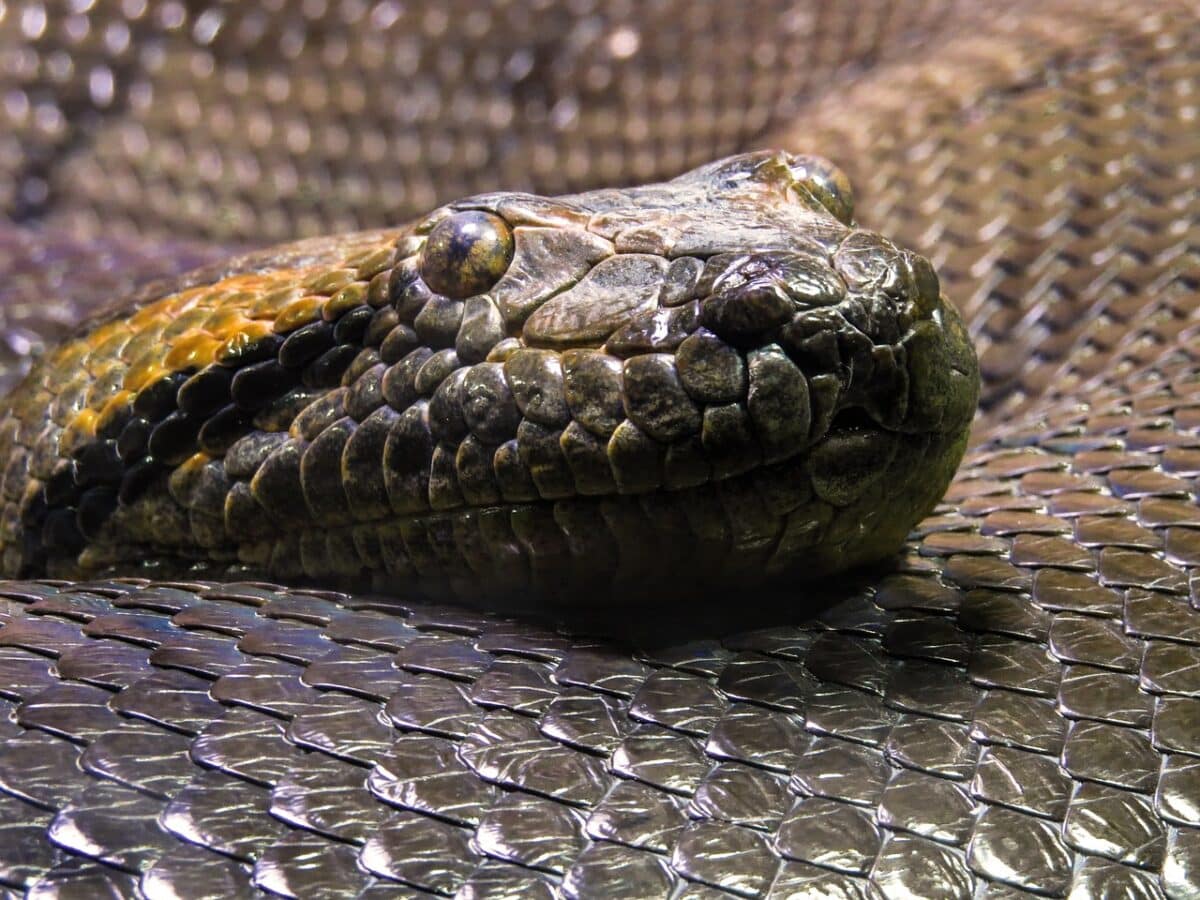
The yellow anaconda is a smaller species of anaconda, growing up to 10 feet long and weighing up to 60 pounds.
It has a yellowish-brown skin with dark spots, and it is found mainly in the wetlands and grasslands of South America, including Argentina, Brazil, and Paraguay.
#3 Dark-spotted Anaconda
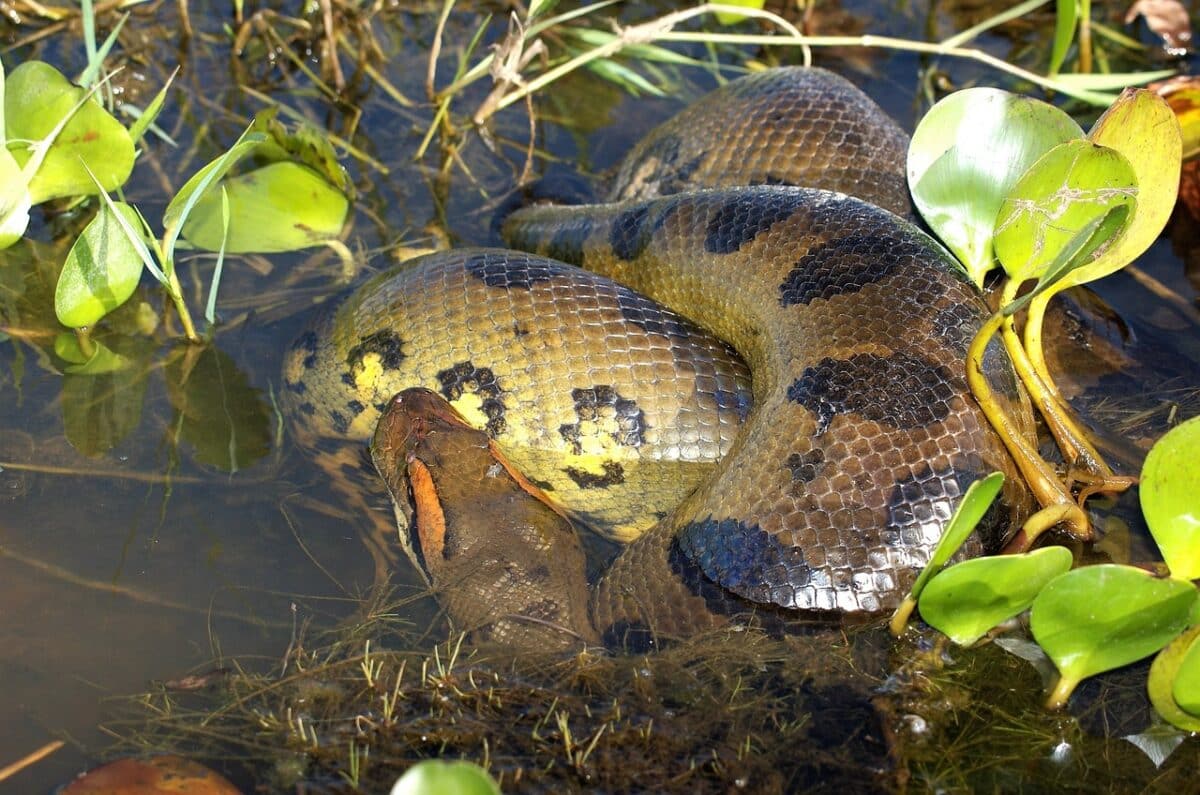
The dark-spotted anaconda is a relatively unknown species of anaconda that is found only in a small area of northern South America, including Guyana, Suriname, and French Guiana. These snakes love the water.
It has a dark brown or black skin with distinctive white spots that help it camouflage in its jungle habitat.
#4 Bolivian Anaconda
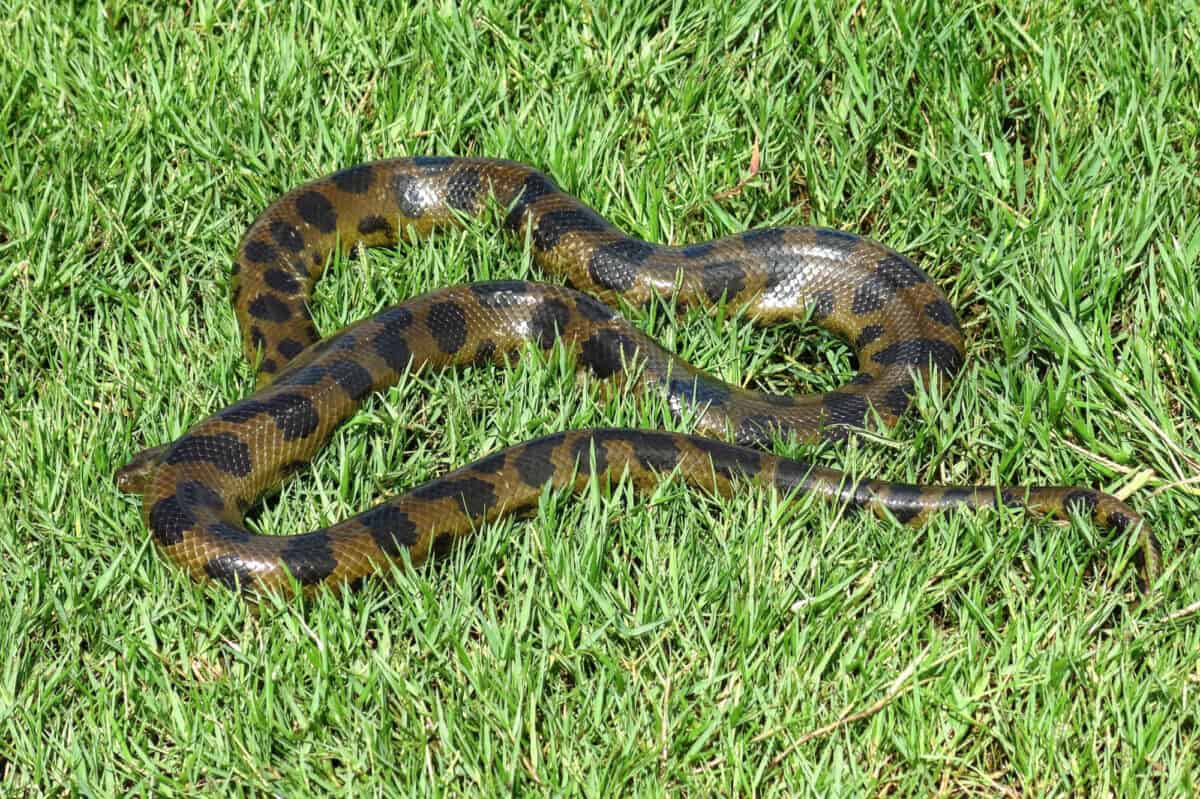
The Bolivian anaconda is a recently discovered species of anaconda that was only identified in 2002. It has a dark brown skin with small, circular markings, and it is found mainly in the remote regions of Bolivia and Brazil.
Each species of anaconda has its own unique characteristics and adaptations that allow it to thrive in its specific habitat. Despite their differences, however, all four species are formidable predators that play an important role in the ecosystems of the South American rainforests and wetlands.
Anacondas have a cylindrical body shape, with a short, broad head and a thick, muscular neck. Their skin is covered in overlapping scales that give them a rough texture, and can be green or brown in color, depending on their habitat and age.
Facts About Anacondas
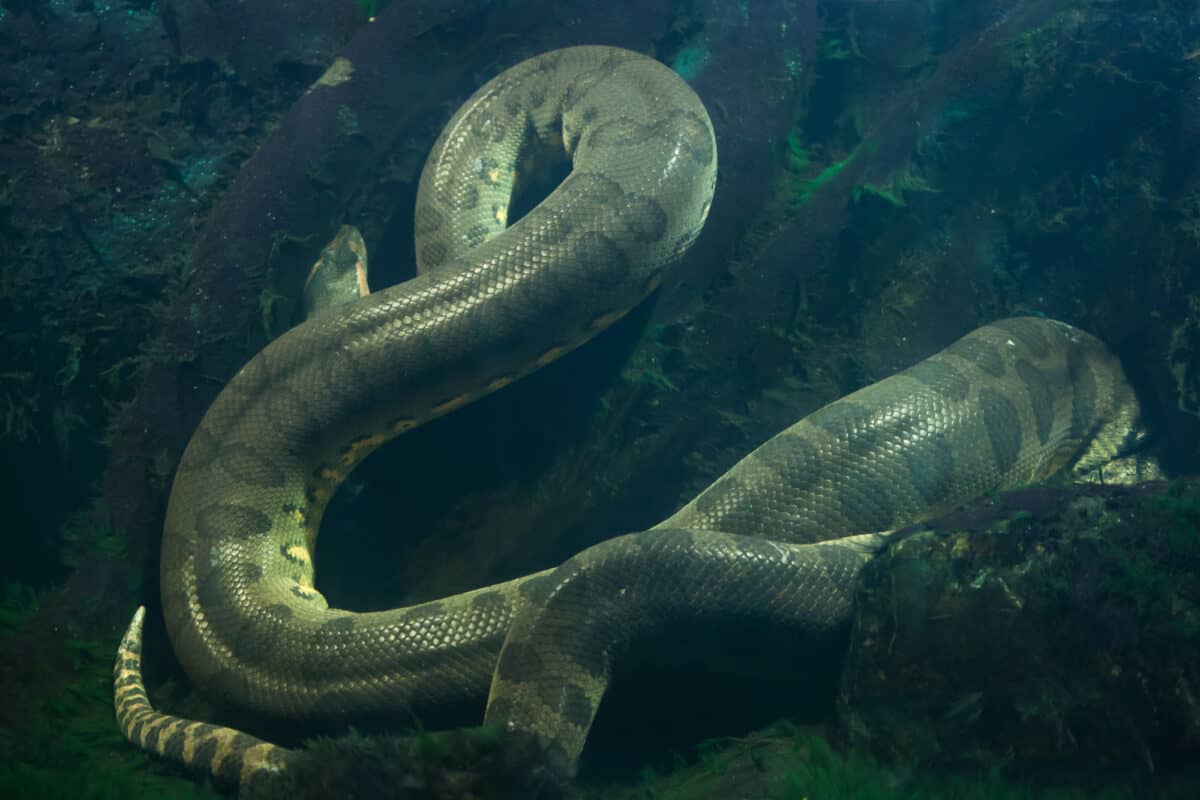
- Anacondas are ectothermic, which means they rely on external heat sources to regulate their body temperature.
- They are also ovoviviparous, meaning they give birth to live young rather than laying eggs.
Anacondas’ most distinctive features are their powerful jaws and teeth. They have rows of sharp, recurved teeth that are angled backward, allowing them to grab and hold onto prey while constricting it.
Anacondas also have flexible jaws that can open up to 180 degrees, allowing them to swallow prey much larger than their head.
However, they are non-venomous so a bit on its own may not be deadly, like with others snakes.
Where Do Anacondas Live? Habitat And Behavior
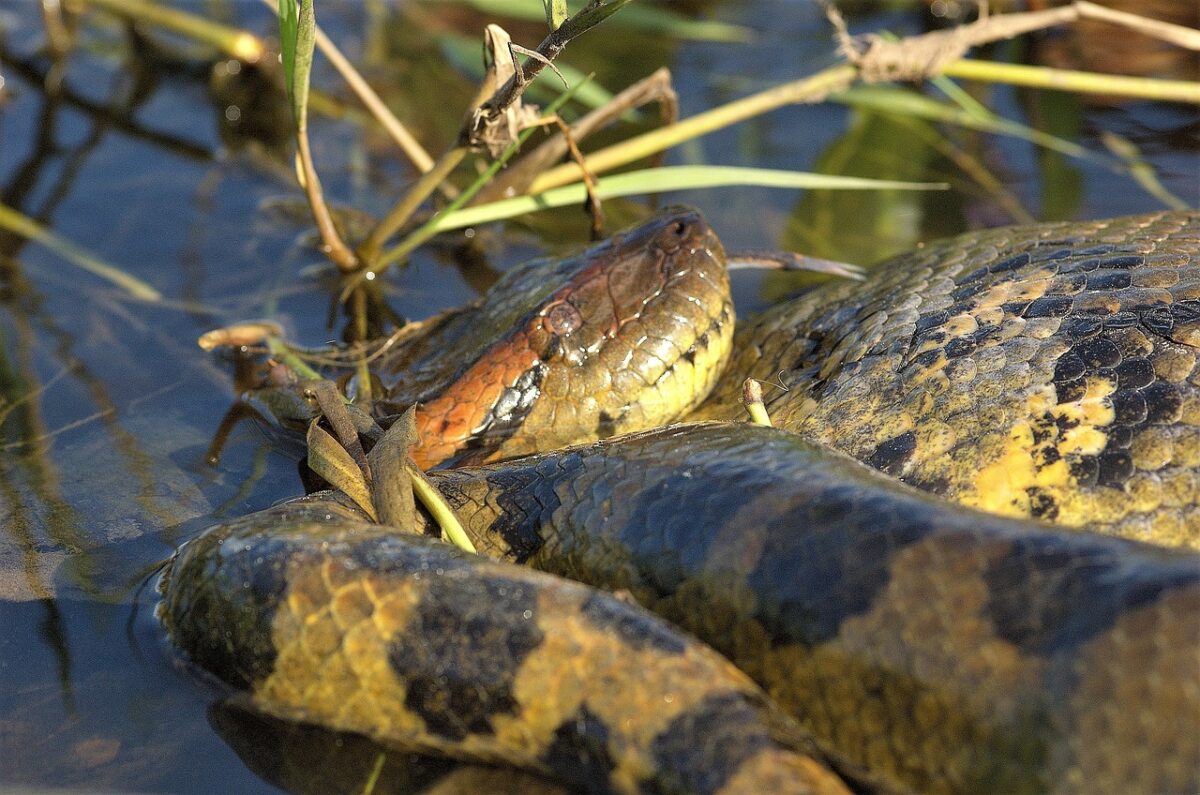
Anacondas are mainly found in the rainforests and swamps of South America, where they inhabit a variety of aquatic and terrestrial habitats.
They are excellent swimmers and can move easily through rivers, streams, and marshes. They are also able to climb trees and can be found resting on branches overhanging water.
Here are some of the countries where anacondas are known to live:
- Brazil: The Amazon rainforest in Brazil is home to several species of anaconda, including the green anaconda, the yellow anaconda, and the dark-spotted anaconda.
- Venezuela: The Orinoco River basin in Venezuela is a prime habitat for anacondas, where they can be found along the river banks and in the surrounding forests.
- Colombia: Anacondas are also found in Colombia’s Amazon rainforest and other wetland areas, where they hunt for prey in the water and on land.
- Peru: The Peruvian Amazon is home to several species of anaconda, including the green anaconda, which is the largest and most well-known species.
What is the size of an average anaconda?

Anacondas are among the largest snakes in the world. On average, anacondas can reach lengths of 15 to 20 feet, although some individuals have been known to grow even larger, up to 30 feet.
What do anacondas eat?

Anacondas are carnivorous and have a varied diet. They primarily feed on fish, birds, mammals, and even larger prey like caimans and capybaras. They are known for their powerful constriction method to subdue their prey.
How do anacondas hunt their prey?

Anacondas are ambush predators. They rely on their camouflage to blend into their surroundings, waiting patiently for unsuspecting prey to come close. When the prey is within reach, anacondas strike quickly, coiling around the animal and using their strong muscles to constrict and suffocate it.
Are anacondas venomous?

No, anacondas are not venomous. They rely on their sheer size and constriction power to capture and kill their prey rather than using venom.
How do anacondas reproduce?

Anacondas reproduce through sexual reproduction, and they are ovoviviparous, meaning they give birth to live young. Female anacondas can give birth to anywhere from 20 to over 100 baby snakes at a time.
What are the different species of anacondas?

There are four recognized species of anacondas: the Green Anaconda (Eunectes murinus), the Yellow Anaconda (Eunectes notaeus), the Dark-spotted Anaconda (Eunectes deschauenseei), and the Bolivian Anaconda (Eunectes beniensis). The Green Anaconda is the largest and most well-known of the species.
How long do anacondas live?

In the wild, anacondas typically live for about 10 to 12 years. However, in captivity, they can live up to 30 years or more, provided they receive proper care and nutrition.
What are the main threats to anacondas?
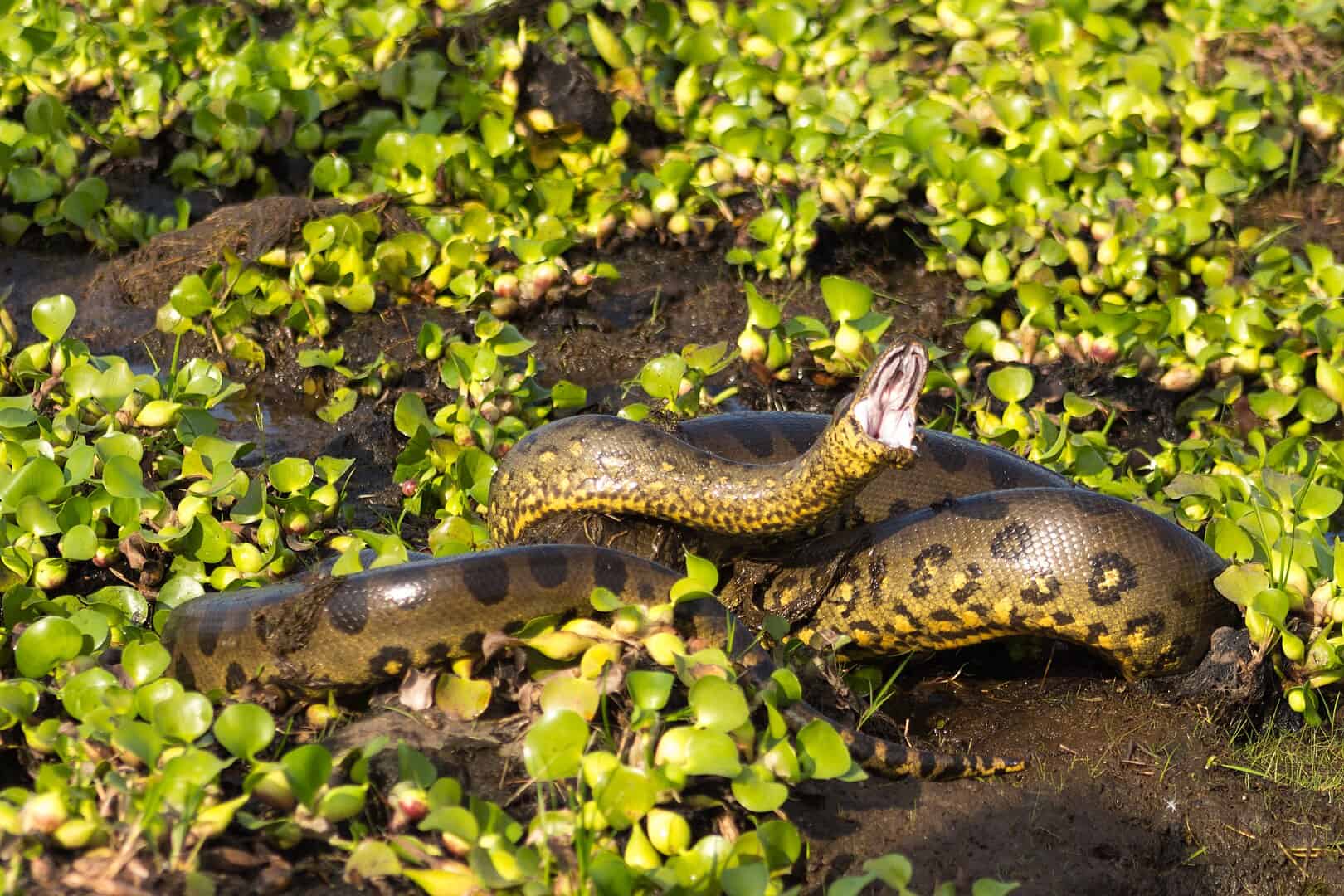
The primary threats to anacondas include habitat destruction, hunting, and capture for the exotic pet trade. Deforestation and the draining of wetlands for agriculture and urban development are significant contributors to habitat loss.
Are anacondas dangerous to humans?

While anacondas have the potential to be dangerous due to their size and strength, attacks on humans are extremely rare. Anacondas typically avoid human interaction and will retreat if given the opportunity. Most reported incidents involve mistaken identity or defensive behavior when humans encroach on their territory.
The Legend Of The Giant Anaconda

Throughout history, there have been many stories and legends about giant anacondas that are even larger and more powerful than any other snake.
These mythical creatures have been rumored to inhabit the rivers and swamps of South America, where they prey on anything that crosses their path, including humans.
One of the most famous legends is that of the “Megaconda,” a massive anaconda that is said to be over 100 feet long and capable of swallowing an entire cow or even a small boat.
According to the legend, the Megaconda is so powerful that it can crush a crocodile with a single squeeze and can swallow a human whole without even chewing.
FAQs
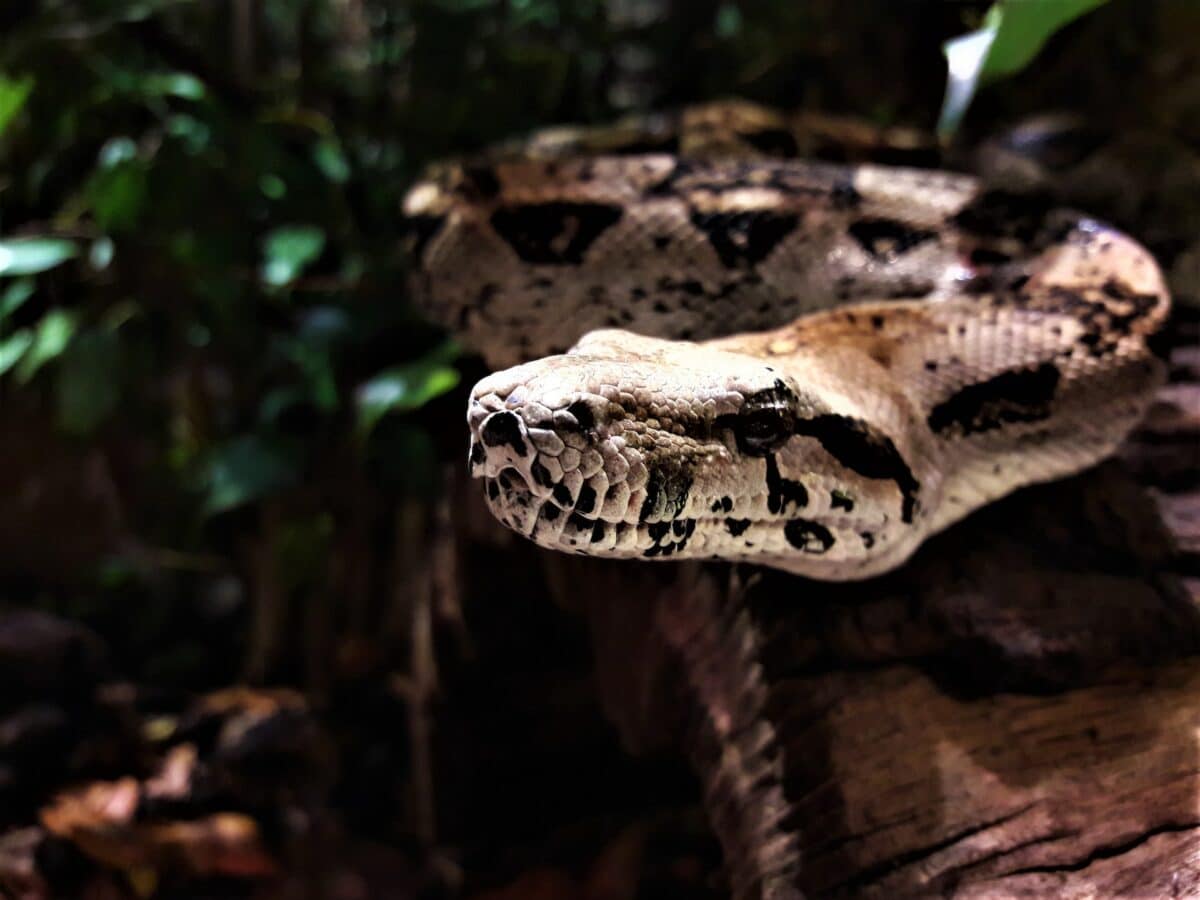
While anacondas are often associated with South America, they are not found in Africa. Instead, Africa is home to a variety of other snake species such as the African rock python (which is a close relative of anacondas), the black mamba, and the green mamba, among others.
As apex predators, anacondas have few natural predators. However, there are a few animals that are known to prey on them, including jaguars, caimans, and large birds of prey. In addition, anacondas may also fall victim to parasites and diseases in the wild.
Even though the green anaconda is one of the heaviest and longest snake species worldwide, there are a few other snakes that can grow even longer. For example, the reticulated python is the longest snake species globally and can reach up to 30 feet or more in length.
It is extremely rare for an anaconda to attack a human, but if it does happen, the most important thing to do is to stay calm and avoid struggling or making sudden movements.
Anacondas rely on their constricting muscles to subdue their prey, so if you remain still, the snake may eventually release you. However, if you do need to escape, try to loosen the snake’s grip by pushing against its body or hitting it on the head.
While both the anaconda and the python are large and impressive snake species, the anaconda is generally considered to be heavier and thicker, while the python is longer.
The green anaconda can weigh over 500 pounds and have a girth of up to 3 feet, while the reticulated python can grow up to 30 feet or more in length.
Anacondas have incredibly strong jaws that are capable of exerting tremendous pressure when biting down on their prey.
While exact measurements are difficult to determine, it is estimated that an anaconda’s bite force is somewhere between 200 and 300 pounds per square inch, which is comparable to that of a large crocodile or alligator.
While the green anaconda is one of the longest known snake species, there are a few other species that can grow longer.
The reticulated python, as mentioned earlier, is the longest snake species in the world, with some individuals growing up to 30 feet or more in length.
Other snake species that can grow quite long include the Burmese python and the African rock python.
Anacondas are not venomous, but they are still considered dangerous due to their large size and powerful muscles.
If provoked or threatened, anacondas can bite and constrict their prey, potentially causing serious injury or death. However, anacondas are generally shy and avoid humans whenever possible, so the risk of encountering one in the wild is quite low.
While individual sizes can vary, most adult green anacondas are between 15 and 20 feet in length, although some individuals may grow even larger.
Females are typically larger than males, and they can give birth to live young, with litters ranging from 20 to 40 offspring.
The reticulated python (Python reticulatus) is a species of python found in Southeast Asia. It is the largest snake species in the world and can grow up to 30 feet long and weigh over 350 pounds. It has a beautiful pattern of diamond-shaped scales that give it its name.
The largest reticulated python ever recorded was a massive female specimen that measured 25 feet and 2 inches long and weighed over 350 pounds.
It was captured in Indonesia in 1912 and is now preserved in the National Museum of Natural History in Washington, D.C.
If you’d like to learn more:
Check out more of our snake content by clicking here!
Join our Forum for free today!

- Top 10 Reasons You Should Consider Adopting an Animal From a Shelter - June 17, 2024
- Massive 25-Foot Anaconda Halts Traffic in Brazil Caught on Camera - June 16, 2024
- Unique Footage of 5 Bald Eagles Fight Midair Over Unlucky Fish - June 16, 2024

